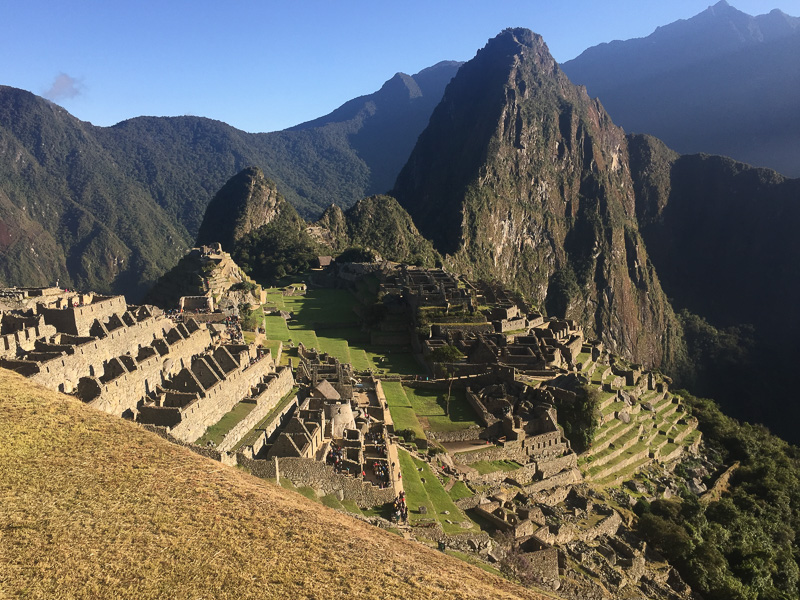
peru
Peru, the sweetheart of South America with Machu Picchu a stalwart of many a bucket list. Since the ancient city was discovered in 1911 by explorer and archaeologist Hiram Bingham many have followed in his footsteps to explore the Inca Trail, Sacred Valley, and colonial city of Cusco.
Peru is also home to a chunk of the Amazon rainforest, the Nazca Lines, Lake Titicaca, and Lima, the country's capital with its preserved colonial centre.
Of the 4.6 million tourists who visited Peru in 2016, an estimated 1.5 million visit Machu Picchu*.
Fast Facts
- There are over 3,000 different varieties of potato grown in Peru. It is thought that the Spaniards introduced potatoes from Europe as early as 1562. However, ancient Peruvians domesticated a type of potato as far back as 8,000 years ago.*
- Peru is home to the highest sand dune in the world. Cerro Blanco is located in the Sechura Desert near the Nazca Lines and measures 1,176m (3,860 feet) from base to summit.*
- The condor (Vultur gryphus) is the world’s largest flying bird, standing up to 1.2m (4 feet) high with a wingspan of 3 metres (10 feet). Despite weighing up to 12 kg (27 pounds), the bird can soar for hours. Native to the Andes, it was considered a sacred bird by the Incas, but is now listed as “vulnerable” by the World Conservation Union. You can get a glimpse of this majestic bird in Colca Canyon which is incidentally almost twice as deep as the U.S.’s Grand Canyon.*
When to Go
The best time to visit Peru is April/May after the rainy season (December to March) and before the peak season. The countryside is still lush and green but the tourist crowds have yet to arrive.
In the highlands of the Andes (including Machu Picchu), the dry season runs from April to November. From June onwards conditions for trekking are good with days clear and sunny, but evenings can still be chilly especially at high elevations.
The Inca Trail closes during February for it annual spruce up. From June to August Machu Picchu can be extremely busy with 2,000 visitors per day. Peruvians usually travel late July so it can be difficult to find accommodation in July/August.
The Amazon's tropical climate means it is humid year-round but this intensifies during the rainy season (December to May). The dry season (June to November) is better for rainforest trekking as there are fewer mosquitoes and animals are generally closer to the rivers.
The coastal areas have a dry hot climate for most of the year with temperatures climbing to a scorching 45°C (110°F) from December to April.
Our Posts
- We loved Cusco, find out why in Inca Life (Part 1): Exploring Cusco and Surroundings
- The perfect alternative to the full four day Inca Trail, Inca Life (Part 2): Machu Picchu from the 104 km Marker



